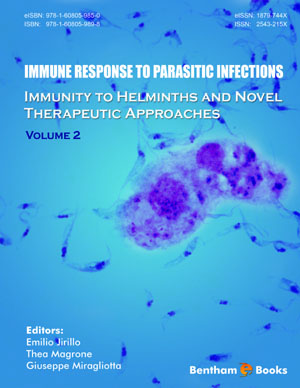Abstract
Toxocara canis is a nematode with a biological cycle that includes a definitive canine host and diverse paratenic hosts. These hosts include humans, rats, rabbits, birds, and pigs. This parasite is the causal agent for toxocariosis, which is an important parasitic infection in tropical and subtropical regions. Infection of BALB/c mice with T. canis elicited a Th2 response; however, this infection did not significantly alter the Th1 immune response. An appropriate animal model must primarily imitate the human host, the parasite’s responses to the human host or the way that both the host and parasite interact. The knowledge of the immunological response in toxocariosis is relevant for understanding the protective mechanisms developed by the host against the parasite and the immune modulation effect on these mechanisms by the larvae. These parasite-host interactions could culminate in the success of the infection, the development of the disease, the destruction of the parasite or the interruption of its pathogenic mechanisms. This knowledge allows to design the methods of immunodiagnosis based on the detection of specific antibodies against parasite antigens and/or the detection of the parasites’ antigens. Finally, the identification of the protective immune response mechanisms could serve in the development of strategies for the prevention, treatment and more adequate management of patients. In this chapter, we review certain aspects of the immunological responses that participate in the infection and in the disease, the relevant aspects of the humoral immunological response for the design of immunodiagnostic methods and for the development of vaccines.
Keywords: Toxocariosis, Toxocara canis, helminth, nematode, worm, immunity, immune response, immunoparasitology, Th1, Th2, cytokines, drug design, immunodiagnosis, epidemiology.






















